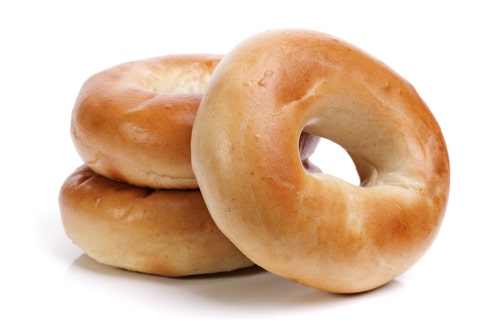
What is a Portion?
It probably comes as no surprise that portion sizes have gotten bigger over the last couple of decades. In fact, serving sizes at many restaurants are more than four times what they should be. What does that mean for those that are battling the bulge? Unfortunately, it means that you are probably taking in way too many calories – even if you only eat half of what you are typically served. To get a better idea of how portion sizes have grown, consider these comparisons:
• A cup of coffee in the ’70s was about 8 oz. and you were limited to putting small packets of cream and sugar in your cup. Even all dolled up, your cup of restaurant coffee would have only come to about 25 calories back then. Compare that to today’s 350-calorie or more, latte with fancy syrup and whipped cream.
• Bagels used to be about three inches and approximately 150 calories. Today, the typical bagel is five to six inches and contains roughly 350 calories.
• Hamburgers. The Journal of Public Health Policy published a study on portion sizes that found that burgers at fast food chains were two to five times larger than when they were first introduced. For example, when McDonald’s first opened its doors in 1955, it offered one burger option that weighed less than two ounces. Today, their largest hamburger patty weighs about eight ounces.
We’ve gotten so far from healthy portion sizes of food that we may not even know what normal looks like. For instance, a serving of meat should be the size of a deck of cards. A serving of dry cereal is ½ cup which is equivalent to the bulb part of a standard light bulb. A cup of pasta is equal to a baseball. And a serving of cheese is roughly the size of your thumb.
Getting Portion Sizes Right
Taking control of serving sizes is as much a mental game as it is physical. We are conditioned to regard bigger as better. But what is “supersizing” doing to your health? Start reducing your serving sizes by changing your thought patterns. Begin to evaluate the nutritional quality of your food and not the size. Here are more tips for scaling down your portion sizes:
• To-go boxes are your friend when dining out. Immediately upon ordering an entrée, pack up half or more of it to take home.
• Eat on a smaller plate. Studies have found that those that struggle with their weight are also the kind of people who feel that they must clean their plate at every meal. Eating on smaller plates is a great way to cut portion sizes.
• Treat your entrée as a side dish. Instead of a plate of spaghetti with a tiny portion of broccoli, try to reverse the ratio. Eating mostly veggies will automatically cut your calories.
• Divvy up snack foods. You can eat a lot of chips, crackers, or cookies right out of the box before you realize how many extra calories you have just consumed. Re-package these types of snack foods into smaller bags when you bring them home from the store to avoid overeating them.
Portion control is the key to losing weight or maintaining a healthy weight. But it can be difficult given that society has come to value massively inflated serving sizes. The secret is to realize that you don’t need to exaggerate portion sizes to be satisfied. Use these tips to get your serving sizes back in check.
Related Articles By Cathe:
Portion Size Control: Simple Ways to Control How Much You Eat
Portion Size Trumps Mindful Eating for Controlling How Many Calories You Eat
Portion Control: 5 Ways to Avoid Portion Distortion
5 Times You Eat More Than You Think You Do
Dieticians Reveal 7 Mistakes People Make When Trying to Lose Weight

